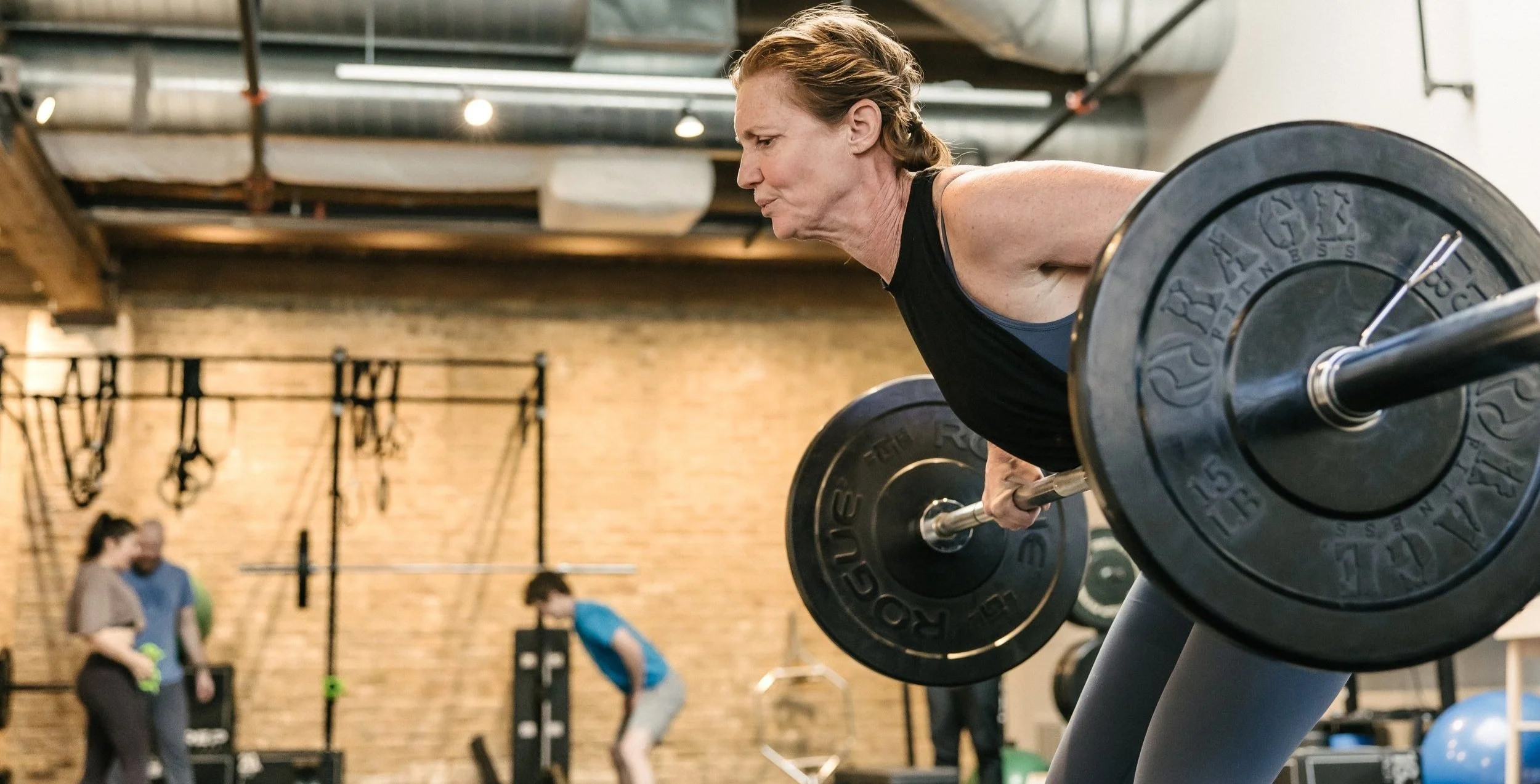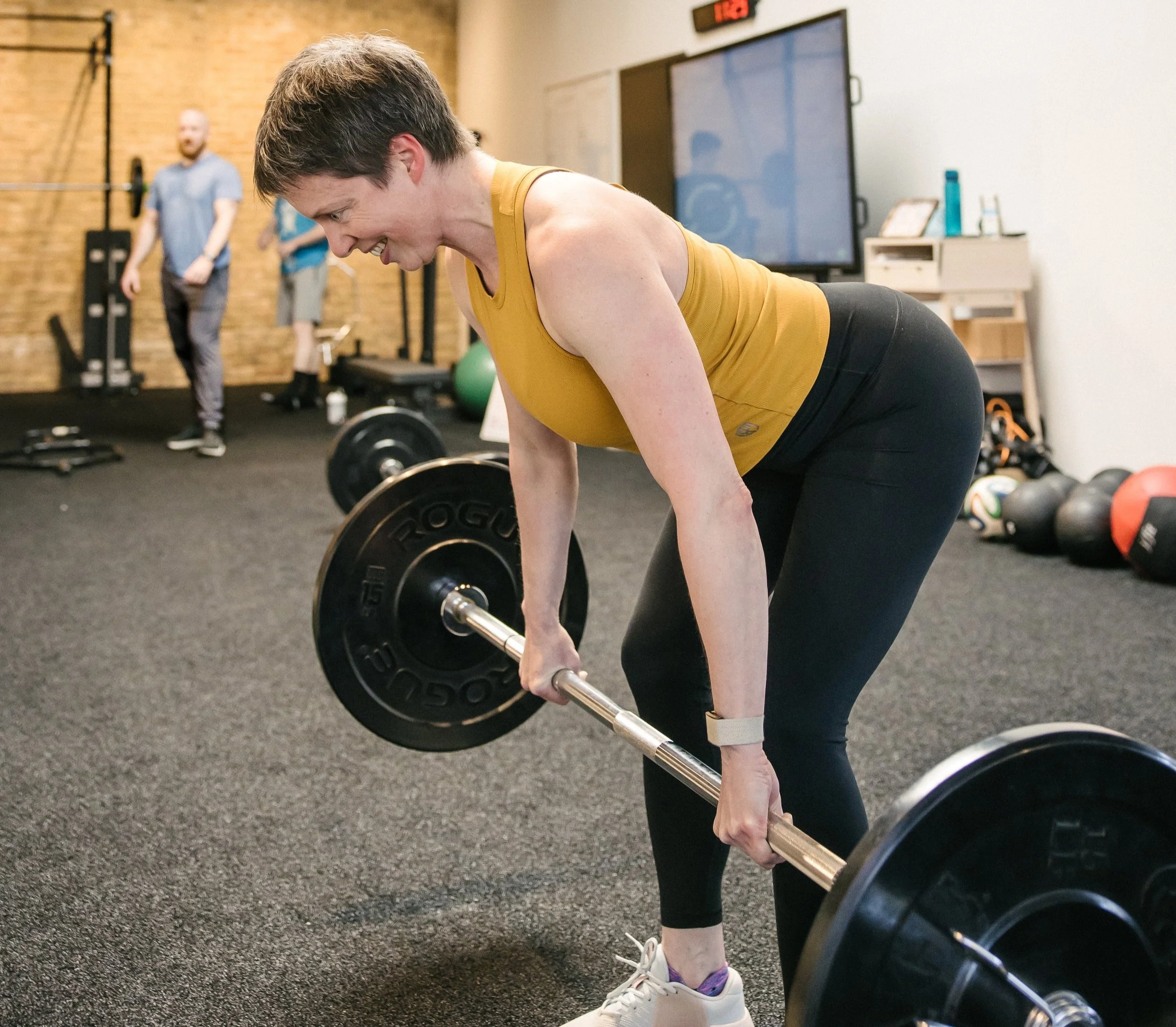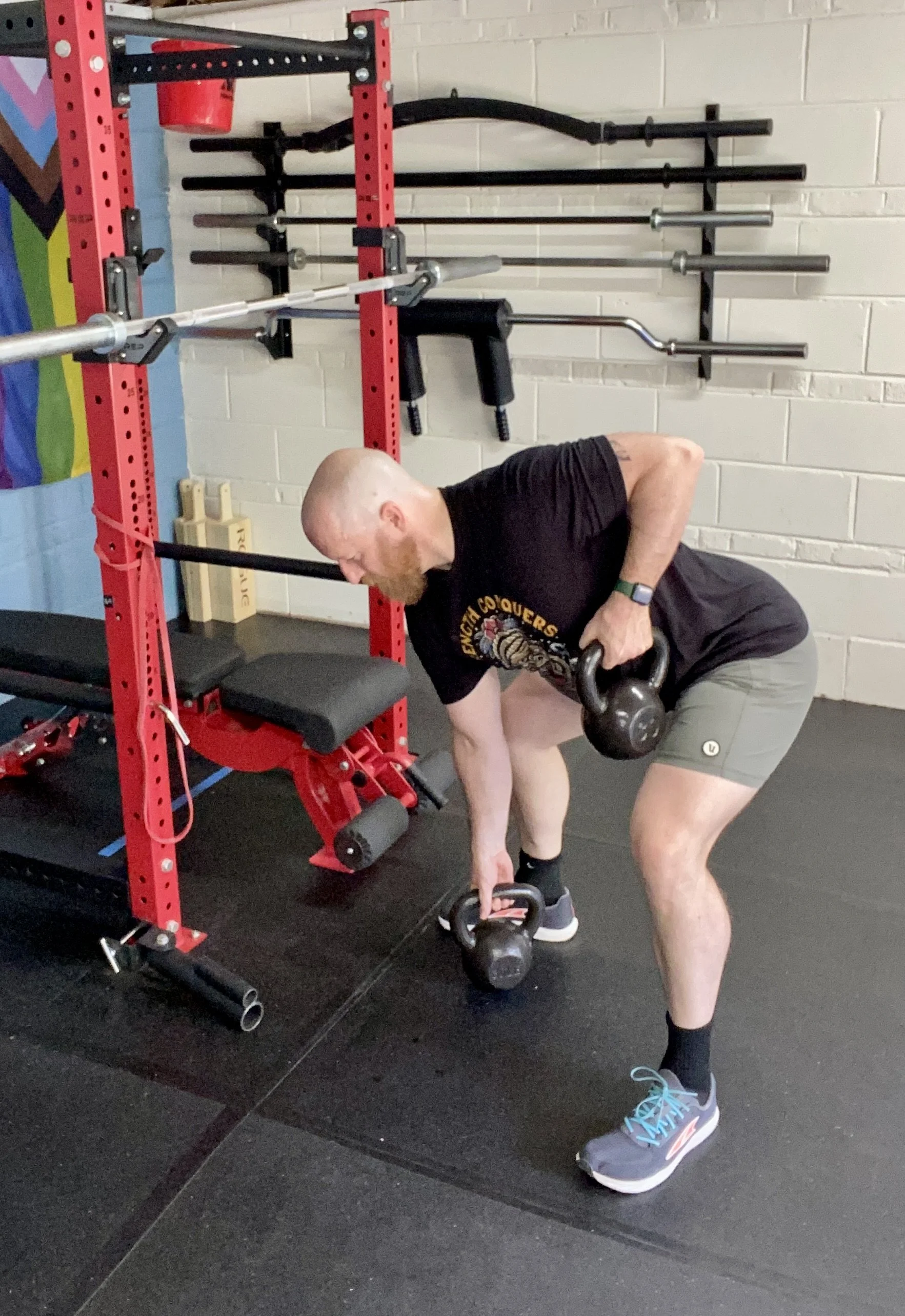A Guide to Mastering the Barbell Row
The barbell row is a core barbell lift for strength, power, and hypertrophy. Numerous variations exist depending on your specific goal. Combining two different versions typically gives the best results within a strength and conditioning program. Photo credit: Becca Heuer.
Introduction
The barbell row belongs in any lifting program.
Athletes, lifters, powerlifters, and bodybuilders all benefit for the following reasons:
Like any good compound barbell lift, it targets several large muscle groups.
It trains stability for secondary muscle groups.
It has an extensive range of motion when performed correctly.
It's easily progressed and overloaded.
Learning the correct technique enhances total body awareness and control.
It's efficient and effective.
This last factor is crucial.
Time is our biggest constraint whether we're training for a competition or general wellness. The barbell row stimulates muscle growth and strength with as few as three weekly sets.
In this comprehensive guide, we'll explore the various aspects of the barbell row.
Understanding the Barbell Row
The barbell back row is a compound exercise that builds upper-body pulling strength. It primarily develops the latissimus dorsi, rhomboids, and trapezius.
The barbell row also engages the biceps, forearms, and core muscles as stabilizers.
The lifter performs the row horizontally, with the chest facing the floor. In that sense, it's complementary to vertical pulling, such as a lat pull or pull-up.
I typically use barbell rows as a foundational lift for my clients, particularly if they're engaged in sports. The hip hinge position builds strength and resilience in the spinal erectors. It also requires coordination of the lower back, glutes, and hamstrings, which are common sites for injuries.
The movement is also versatile. You can tweak the angle or your grip to emphasize different muscle groups. For example, an overhand grip in a fully bent position focuses on the lats. A slightly more upright angle with an underhand grip shifts the weight toward the low traps.
HOW TO DO BARBELL ROWS
Here's a step-by-step guide to performing a standard barbell row:
Stand straight with the barbell directly over the middle of your feet
Set your feet about shoulder-width apart
Create a slight bend in the knees
Bend at your hips while bringing your torso forward until it's nearly parallel to the floor.
Focus on maintaining a straight line along your head, neck, and back.
Using an overhand grip, grasp the barbell while it's still on the ground.
Keep your arms fully extended, with your elbows straight.
Engage your core by squeezing your glutes and breathing deeply into your belly.
Pull the barbell towards your belly button, keeping your elbows close to your body.
Squeeze your shoulder blades together as hard as possible.
Lower the barbell until the arms fully extend, returning to the starting position while keeping the bar off the ground.
Repeat for the designated number of reps.
Perfecting Your Barbell Row Form
The barbell row takes some time to learn.
The hardest part is finding the right angle and height for your back. You'll target the shoulders instead of the back if you're too upright. Recording yourself with your phone or using a mirror will help you see and feel the correct position.
Here are a few other tips.
1. Maintain a neutral spine: Slightly arching or rounding your back is natural. But try to maintain the same position throughout the rep and set. A lot of shifting will direct tension away from the target muscles.
2. Engage your core: Brace your abs, obliques, and glutes by imagining someone trying to push you over from the side. This core control carries over well to the squat, deadlift, and bench.
3. Control the weight: Aim for 1 second on the descent and ascent while imagining you're squeezing a tennis ball between your shoulder blades. If you're unsure whether you're getting full contraction through the back muscles, pause for 3 seconds before letting that barbell down.
4. Use the full range of motion: Make sure to touch your belly with the bar and fully extend the arms. For a cue, think "heavy in the hands with the bar."
Variations of the Barbell Row
You can complement or substitute the barbell row with other horizontal row movements
Your selections will depend on your primary focus. Barbell versions develop more raw strength and power since you can load them with heavy weights. Dumbbells and kettlebells, meanwhile, allow a greater range of motion, making them ideal for aesthetics and rehab.
The t-row barbell uses a special handle that slides onto the sleeve. The other sleeve is placed into a landmine attachment.
T-Bar Row
A t-bar row requires either a dedicated machine or a landmine with a unique handle.
This variation allows for a neutral grip in a slightly more upright posture.
Some people with elbow or low-back pain find this position more comfortable. Adding a t-bar stand or platform increases the range of motion.
The image shows a well-equipped gym for strength training. In the foreground, various barbells are neatly arranged on a rack. Behind
Single Arm Dumbbell Row
This is my preferred dumbbell variation to combine with barbell row work, particularly for beginners.
By using a fixed surface like a bench, you’re able to lock into the feel of the muscles working throughout the range of motion.
Plus, a single-armed row builds symmetry and balance in the back.
The Pendlay row is not optimal for building muscle, but the position can reinforce strength and power from the floor.
Pendlay Row
I typically program Pendlay rows for my powerlifters.
Since the lift starts from the ground instead of from a hanging position, you can generate more power, which translates to the deadlift.
Start with a more hinged hip and the torso parallel to the floor.
The supinated grip changes the angle and muscle activation for the row. These types of small adjustments can keep a lifter healthy and balanced.
Underhand Barbell Row
Also known as the reverse-grip barbell row, this variation involves using a supinated (palms-up) grip.
It emphasizes the biceps and lower traps, a weak spot for most people.
You’ll get the most out of this movement by pulling the elbows closer to the body, and trying to squeeze the muscles directly the shoulder blades.
By the shifting the lever to the outside of the body, the lifter can target different the edge of the lats.
Meadows Row
Named after famed bodybuilder John Meadows, this movement is fantastic for targeting the outside lats.
I've used it extensively with lifters struggling with stability on their barbell bench press, or for those trying to build more width.
Kettlebell gorilla row
The gorilla row requires coordination and stability, making it a useful progression from a single arm dumbbell row. Without a fixed surface, the lifter needs tighter contraction of the glutes and can add a slight rotation to target the mid-traps.
Dumbbells also work, but I prefer a kettlebell due to its more comfortable grip.
Cable rows and machine rows
While free weights provide unique benefits, other versions also have their place.
Cables and machines allow for more constant tension. You're also working within a more fixed position relative to free weights. That can make them preferable for truly feeling the muscle with less concern for perfect technique. One example is the seated cable row. The seat and pulleys give you a solid position from which you an experiment with different grips, angles, and ranges.
Combining free weights with machines gives you the most complete results.
Working Barbell Rows into Your Training Routine
Barbell rows can be a valuable addition to various workout splits and training programs. Here are some suggestions for using them effectively:
Back-focused workouts: Pair barbell rows with a machine such as a seated cable row. Add vertical pulling exercises like pull-ups or lat pulldowns to hit all the major muscles from different angles.
Upper-lower splits: Include barbell rows during a workout that includes legs. After squatting, for example, allow your legs to recover with your rows. Then, you can move onto a hip hinge or secondary quad movement followed by a lighter accessory lift such as cable curls.
Upper body days: Combine barbell rows with chest, shoulder, and arm exercises for a comprehensive upper body session. Superset the row with a movement that works an antagonist muscle group, such as a pushup or dumbbell bench press.
Here's an example of how that could play out during a microcycle. (Click here to read more about microcycles, which are typically just a training week).
Workout A: Barbell bent-over rows: 4x8 @ RPE 8
Workout B: Single arm lat pulls 3x12 @ RPE 9
Common Mistakes and How to Avoid Them
To maximize the effectiveness of barbell rows and minimize injury risk, be aware of these common mistakes:
Progressing too quickly: As an accessory movement, the barbell row benefits from a conservative loading approach. Staying at a weight that's 75-80% of your capability will improve muscle and strength development. In addition to refining the technique that stimulates the lats most effectively, you will limit overall fatigue.
Relying on momentum: Avoid swinging the weight or over-relying on your legs to generate power. Again, rows serve as complementary movements within a strength training program most of the time. Controlling the weight develops muscle while preserving more energy for primary movements like the bench press.
Allowing your grip to fail first: Use wrist straps so that your back gets the full stimulus. If your grip fails first, you're robbing yourself of gains. My favorites lifting straps come from Iron Mind (click here to head to their product page).
Conclusion
The barbell row is an essential exercise for developing the back. As a compound movement, it also builds coordination and strength through the forearms, upper arms, and core. Master the movement along with several variations. The result will be strength, size, and power that prepare you for anything your sport or life might throw at you.
Chris Van Nostrand is a certified strength & conditioning coach living in greater Chicago area. Reach out for helping mastering the barbell row or any of your other lifts.








